Archaeology
Archaeology is the study of human history and prehistory through the excavation and analysis of material culture. It is a multidisciplinary field that combines aspects of anthropology, history, geology, and other scientific disciplines to reconstruct and understand past human societies.
Key Concepts in Archaeology
- Excavation: Archaeologists carefully dig and remove layers of soil to uncover artifacts, structures, and other physical remains of past human activities.
- Artifact Analysis: Archaeologists study and analyze objects such as tools, pottery, and artwork to understand the technology, artistry, and daily life of past cultures.
- Stratigraphy: This is the study of the layers of soil and debris at a site, which helps archaeologists understand the chronological sequence of human occupation and activity.
- Carbon Dating: This scientific method is used to determine the age of organic materials such as bone, charcoal, and wood, providing a timeline for human occupation of a site.
- Cultural Context: Understanding the cultural, social, and environmental context of a site is essential for interpreting the significance of archaeological findings.
Study Guide
To study archaeology effectively, it is important to understand the following key points:
- What is the role of an archaeologist in studying human history?
- How do archaeologists conduct excavations and analyze artifacts?
- Why is stratigraphy important in archaeological research?
- What is carbon dating and how does it help determine the age of archaeological finds?
- Why is understanding cultural context crucial for interpreting archaeological evidence?
By understanding these concepts, students can gain a comprehensive understanding of the methods and significance of archaeology in reconstructing human history.
Remember, archaeology is a fascinating field that provides unique insights into the rich tapestry of human civilization.
.◂Science Worksheets and Study Guides First Grade. Food Chains
Study Guide Food Chains
Food Chains  Activity Lesson
Activity Lesson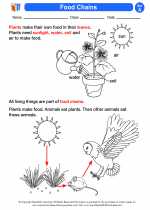 Food Chains
Food Chains  Worksheet/Answer key
Worksheet/Answer key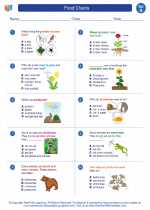 Food Chains
Food Chains  Worksheet/Answer key
Worksheet/Answer key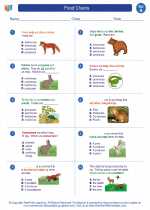 Food Chains
Food Chains  Worksheet/Answer key
Worksheet/Answer key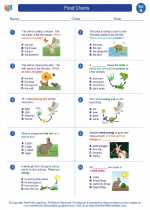 Food Chains
Food Chains  Worksheet/Answer key
Worksheet/Answer key Food Chains
Food Chains  Vocabulary/Answer key
Vocabulary/Answer key Food Chains
Food Chains  Vocabulary/Answer key
Vocabulary/Answer key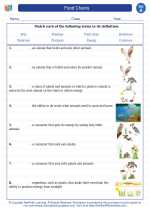 Food Chains
Food Chains 

 Activity Lesson
Activity Lesson
 Worksheet/Answer key
Worksheet/Answer key
 Worksheet/Answer key
Worksheet/Answer key
 Worksheet/Answer key
Worksheet/Answer key
 Worksheet/Answer key
Worksheet/Answer key
 Vocabulary/Answer key
Vocabulary/Answer key
 Vocabulary/Answer key
Vocabulary/Answer key

The resources above cover the following skills:
LIFE SCIENCE
From Molecules to Organisms: Structures and Processes
Design a solution to a human problem by using materials to imitate how plants and/or animals use their external parts to help them survive, grow, and meet their needs (e.g., outerwear imitating animal furs for insulation, gear mimicking tree bark or shells for protection).